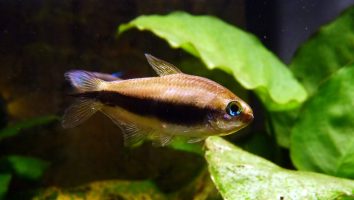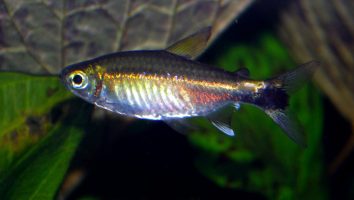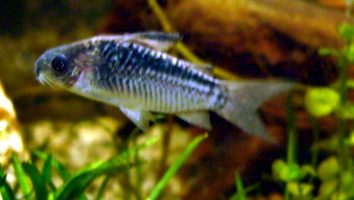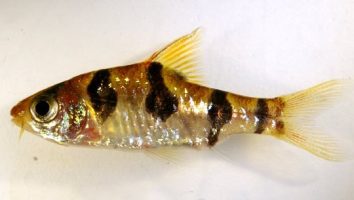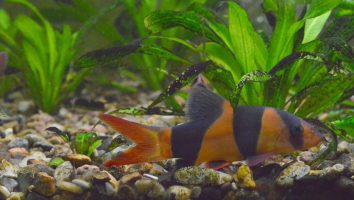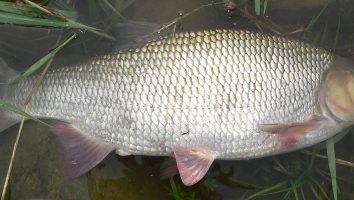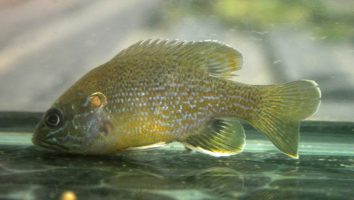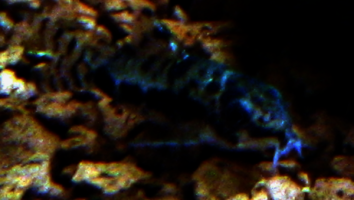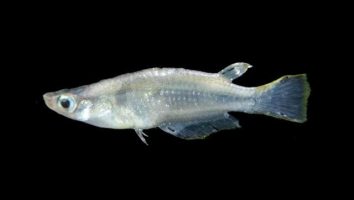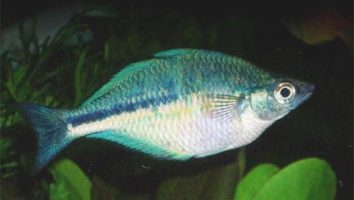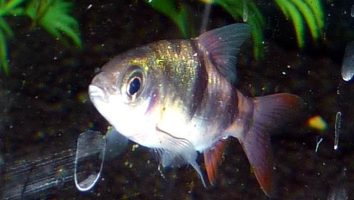The eartheater cichlid is a freshwater fish that is gaining popularity in the aquarium world. This is due to their unique appearance and personality.
They are also very easy to care for, making them a great choice for beginner fishkeepers.
In this guide, we will teach you everything you need to know about eartheater cichlid care. We will cover their diet, tank mates, size, lifespan, and more!
Table of contents
Species overview
The eartheater cichlid (scientific name: Geophagus altifrons) is a freshwater fish that’s native to the Amazon River basin in South America.
They are most commonly found in Brazil, Guyana, and Suriname but have also been known to inhabit other parts of the Amazon basin.
Eartheater cichlids are a popular choice for aquariums because of their unique appearance and interesting behavior. They get their name from their habit of sifting through the substrate in search of food.
These fish are relatively peaceful but can be aggressive toward their own species. It’s best to keep them in a tank with other fish that are similar in size and temperament.
Appearance
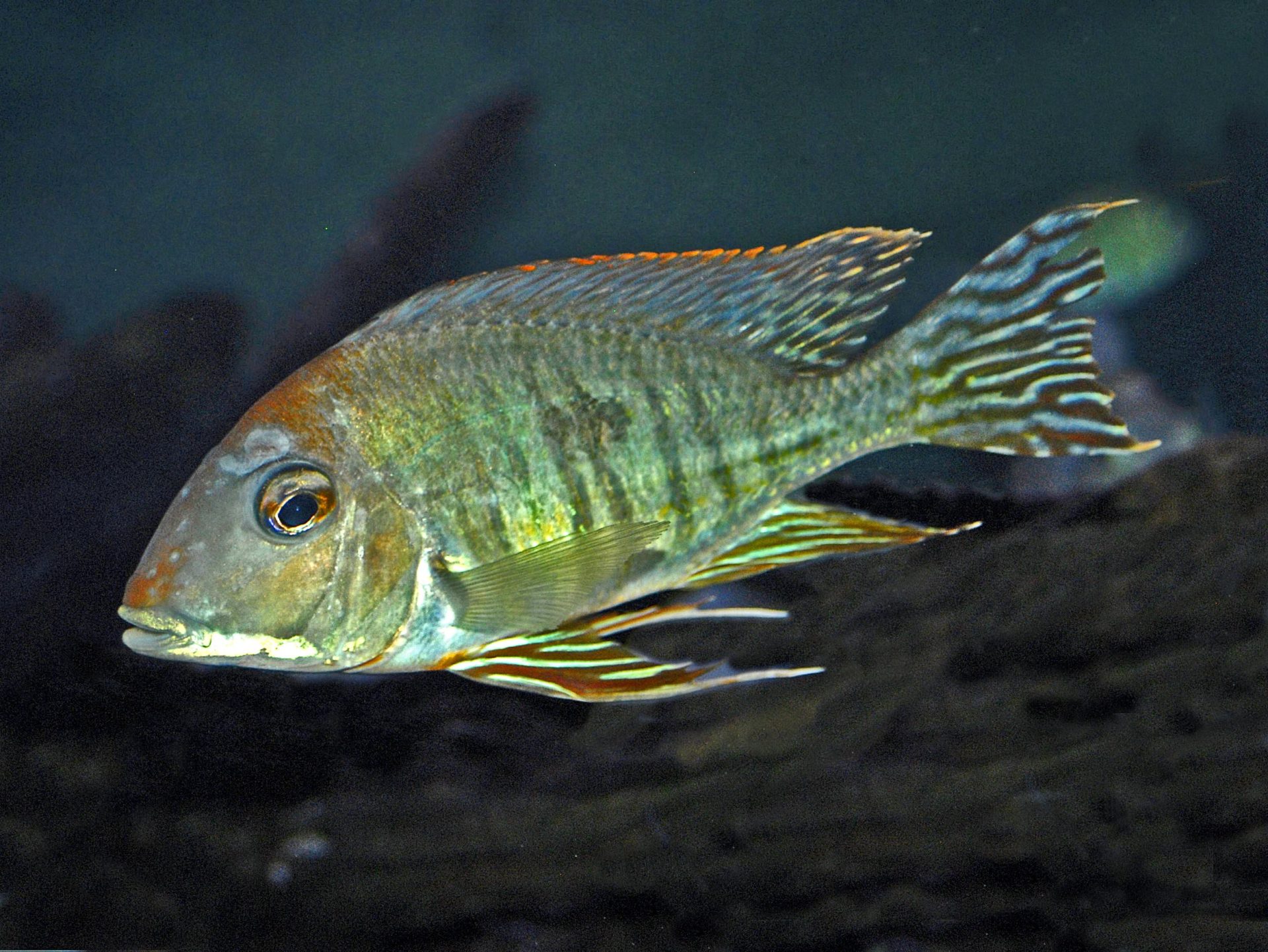
The first thing you’ll notice about this fish is their long thin body. They have a very elegant look that’s accented by their fins.
The dorsal fin on these fish is extremely long. It starts at the base of their head and extends almost all the way back to their caudal peduncle.
The anal fin is a bit shorter, but still extends a good portion of the way back. Both of these fins have a beautiful filigree pattern that really makes them stand out.
The caudal fin is forked and symmetrical on both the top and bottom.
Eartheater cichlids have a long thin snout that’s kind of reminiscent of a needle nose pliers. This is where their name comes from as they use this snout to sift through the substrate for food.
They have a small mouth that’s located at the very tip of their snout.
These fish are very colorful with a base color that can be anything from yellow to green. They have a series of vertical stripes that run down their body. These stripes can be any number of colors including blue, red, orange, and more.
Lifespan
The average lifespan of an eartheater cichlid is around 10 years. Of course, this can change based on a number of different factors.
The level of care they receive is obviously going to be a big factor. If they’re well cared for, they’ll live longer.
The environment you create for them matters a lot as well. If it’s not ideal, it can shorten their lifespan.
Finally, their diet plays a role. If they’re not getting the right nutrients, it can impact their health and shorten their lifespan.
Size
A full-grown Eartheater cichlid can reach up to 12 inches in length, though the average size is closer to 8 inches. Females are typically a bit smaller than males.
Tank
Tank Size
The recommended tank size for eartheater cichlids is 75 gallons. This is for a single fish and you will need to add at least another 40 gallons for each additional fish you want to keep.
These fish are semi-aggressive so you need to make sure there is plenty of space for them to claim their own territory. If the tank is too small they will often become stressed which can lead to health problems.
Water Parameters
These cichlids are found in the rivers of South America, so they prefer warm water with a neutral to slightly acidic pH. The water should also be well-oxygenated with a moderate flow.
To replicate these conditions in your aquarium, aim for the following water parameters.
- Water temperature: 75 to 82 degrees Fahrenheit
- pH levels: 6.8 to 7.6
- Water hardness: 4 to 15 dGH
- Alkalinity Levels: 2-12 dKH
What To Put In Their Tank
The setup of their tank is important, but it’s not as critical as it is for other species. These fish are adaptable and can do well in a variety of different habitats.
The substrate is one area where you have some room to play around. A classic gravel substrate will work just fine, but you could also use sand if you wanted to.
These fish love to dig so a softer substrate might be a little more comfortable for them. Just be aware that sand can be a bit more difficult to clean than gravel.
When it comes to decorations, you have a few different options. Rocks, driftwood, and plants are all suitable.
We recommend going with plants that are on the hardier side since these fish will likely uproot anything that’s not firmly in place.
You can also include some caves or hiding places for them to retreat to. This is especially important if you have other fish in the tank that might harass them.
Common Diseases
Eartheater cichlids are pretty hearty fish, but they’re not immune to disease. The most common illnesses that affect this species are the usual freshwater culprits.
The most common disease you’ll need to worry about is ich. This is a parasites that will present itself as white spots on the body of your fish. It’s very contagious and can quickly spread to other fish in your tank.
If you notice ich, it’s important to take quick action. There are a variety of treatments available, but the sooner you start the better.
Other potential diseases include hole-in-the-head, bacterial infections, and fungal infections. All of these are relatively common in the freshwater aquarium world.
The best way to prevent your eartheater cichlids from getting sick is to simply maintain a clean and stable tank. These fish are rather resilient, but they’re not immune to poor water conditions.
If you keep the water quality high and the stress levels low, your fish will be much less likely to get sick.
Behavior & Temperament
The eartheater cichlid is a peaceful fish that does well in community tanks. It is a shy fish, so it may take some time for it to come out of its shell. Once it does, it is a active swimmer and will often be seen at the top of the tank.
The eartheater cichlid is a omnivore and will eat most food. It is a good algae eater and will also eat small invertebrates.
The eartheater cichlid is a social fish and does best in groups. It is a peaceful fish, but can be aggressive towards other cichlids.
Tank Mates
The eartheater cichlid is a peaceful species that can get along with most fish. They’re not aggressive and tend to stick to their own business.
This is good news for those looking to create a community tank.
However, there are a few things to consider when adding tank mates for eartheater cichlids.
First, these fish are from South America. As a result, they prefer warm water. This means that you’ll need to find fish that can tolerate warm water as well.
Second, eartheater cichlids are bottom dwellers. They prefer to stay close to the substrate where they can sift through the sand for food.
Because of this, it’s best to add fish that occupy different parts of the water column. This will give everyone their own space and reduce the chance of aggression.
Some compatible tank mates for eartheater cichlids include:
- Tetras
- Danios
- Rasboras
- Corydoras
- Loricariids
- Plecos
Breeding
These fish are mouthbrooders, which means that the female will carry the eggs in her mouth until they hatch. After the fry have hatched, she will still keep them in her mouth for a few days until they’re strong enough to swim on their own.
To get started, you’ll need to set up a breeding tank. It should be at least 50 gallons and have plenty of hiding places. These fish are territorial, so you’ll need to give them plenty of space.
You should also aim for a water temperature of around 86 degrees Fahrenheit.
When ready, add one male and two females to the tank. The male will usually claim a territory and the females will stay with him. If you have more than one male, they may fight.
Once the fish have acclimated to their new environment, you can begin feeding them. Feed them plenty of high-quality foods like live foods and frozen foods.
After a few weeks, the female will be ready to spawn. She will lay her eggs in a cave or some other hidden place. Once she has laid the eggs, the male will fertilize them.
After the eggs have been fertilized, the female will pick them up in her mouth and carry them around. She will do this for about three weeks until the fry are ready to be on their own.
You can then move the fry to a separate tank. Continue feeding them live foods and frozen foods.
Conclusion
The Eartheater cichlid is an amazing freshwater fish that is perfect for anyone who wants a low-maintenance pet.
They are relatively easy to care for and are very peaceful, making them a great addition to any community tank.
Their unique appearance is also a plus, as they are sure to stand out in any tank they are in.
Overall, we highly recommend this fish to anyone who is looking for a low-maintenance pet that is still exciting to watch.

